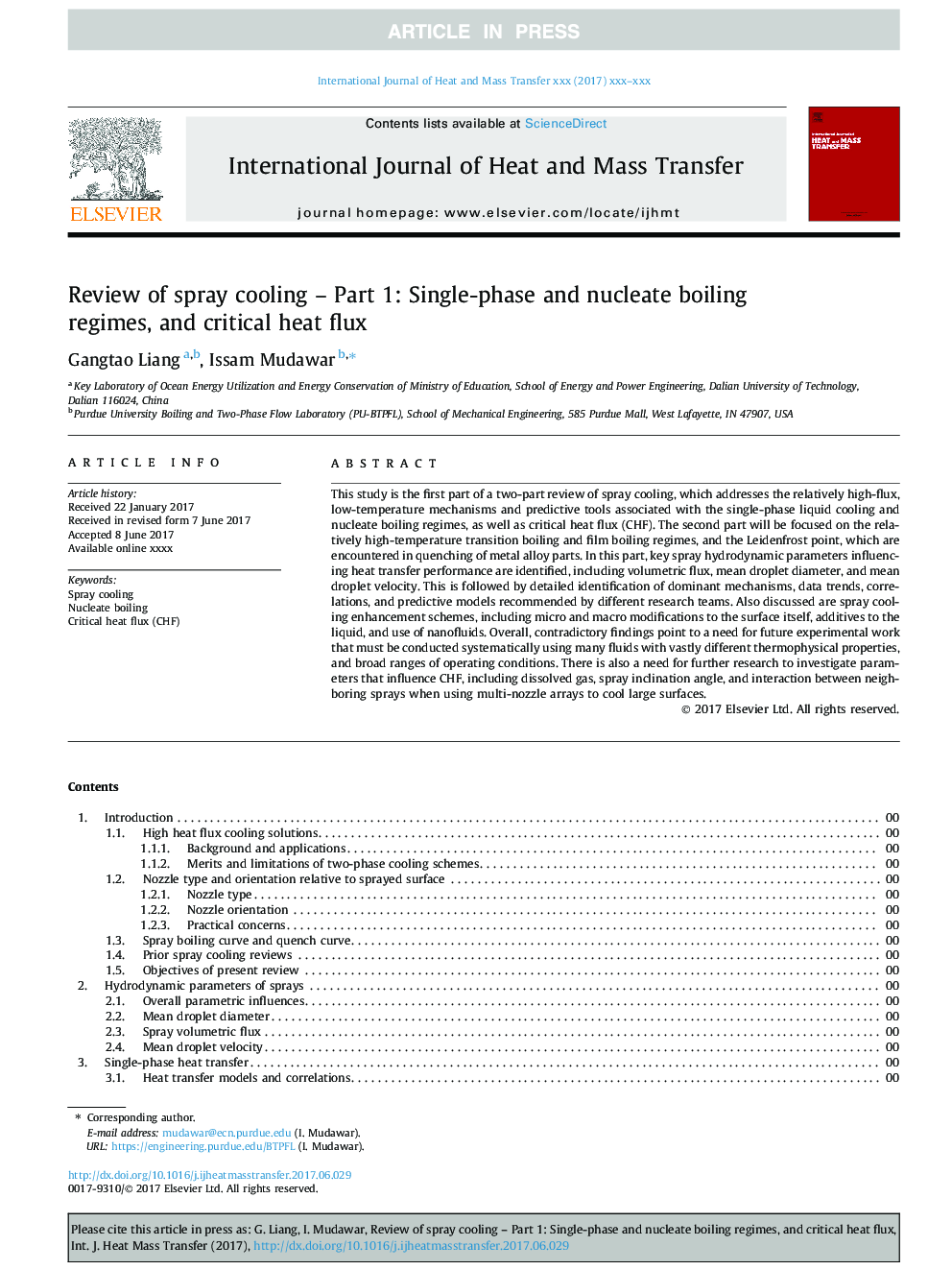| Article ID | Journal | Published Year | Pages | File Type |
|---|---|---|---|---|
| 4993441 | International Journal of Heat and Mass Transfer | 2017 | 32 Pages |
Abstract
This study is the first part of a two-part review of spray cooling, which addresses the relatively high-flux, low-temperature mechanisms and predictive tools associated with the single-phase liquid cooling and nucleate boiling regimes, as well as critical heat flux (CHF). The second part will be focused on the relatively high-temperature transition boiling and film boiling regimes, and the Leidenfrost point, which are encountered in quenching of metal alloy parts. In this part, key spray hydrodynamic parameters influencing heat transfer performance are identified, including volumetric flux, mean droplet diameter, and mean droplet velocity. This is followed by detailed identification of dominant mechanisms, data trends, correlations, and predictive models recommended by different research teams. Also discussed are spray cooling enhancement schemes, including micro and macro modifications to the surface itself, additives to the liquid, and use of nanofluids. Overall, contradictory findings point to a need for future experimental work that must be conducted systematically using many fluids with vastly different thermophysical properties, and broad ranges of operating conditions. There is also a need for further research to investigate parameters that influence CHF, including dissolved gas, spray inclination angle, and interaction between neighboring sprays when using multi-nozzle arrays to cool large surfaces.
Related Topics
Physical Sciences and Engineering
Chemical Engineering
Fluid Flow and Transfer Processes
Authors
Gangtao Liang, Issam Mudawar,
